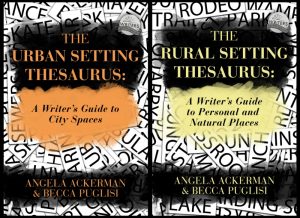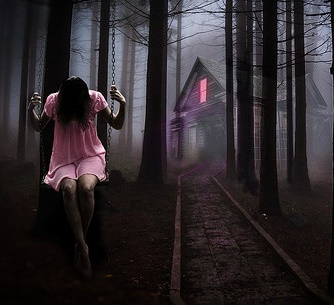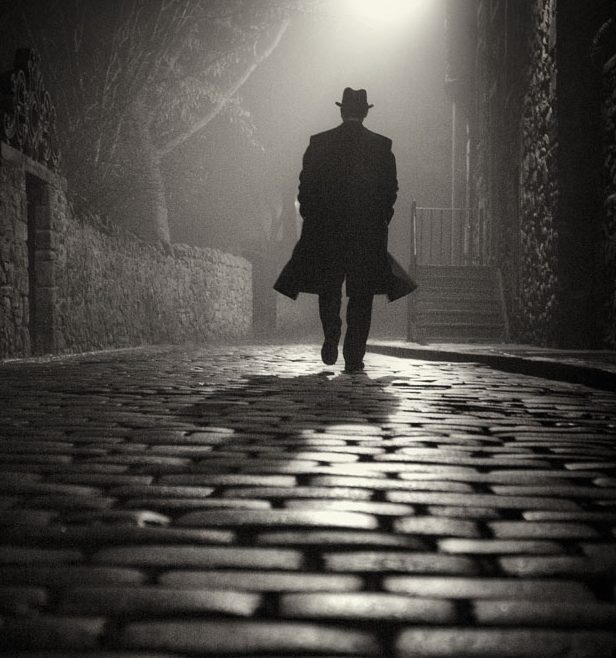How Writers Can Bring Setting to Life through Personification
Today’s post is by Becca Puglisi.
Settings can be tricky for authors. In our desire to firmly ground readers in the scene, we often write too much, adding way more details than are necessary. We also tend to write our settings in somewhat bald terms, keeping them simple so readers can easily envision the time and place.
The problem with these approaches is they result in descriptions that are flat and boring—even when the places themselves are not.
This common area of difficulty is one of the reasons Angela and I decided to tackle settings in our latest books. To be most effective, setting descriptions should be concise and economical, conveying just what’s necessary in a way that brings the scene to life.
Figurative language can often help with this. Similes, metaphors, symbols, and personification can succinctly express the heart of a setting with an economy of words and in a way that appeals to readers.
As an example of how figurative language can be used to effectively describe the setting, I’d like to share an excerpt from The Rural Setting Thesaurus. Hopefully it will give you some ideas for how to juice up the locations in your own stories.
Bringing the Inanimate to Life through Personification
When it comes to enhancing the setting, one of the most effective figurative language techniques is that of personification: adding human characteristics to an inanimate object. Done well, this can add a sense of movement and emotion to an otherwise sterile scene. To see how this works, let’s start with a setting that contains a simple house on a cliff:
At the edge of the bluff stood an old house with chipped paint and crooked shutters.
This description does the job of establishing the house and its location. But it’s static. To add a sense of motion, let’s apply some human movement to the house.
The house squatted at the bluff’s edge, its lines crooked from so many years spent leaning into the wind.
Aha! The house is gaining a little character now. We get a clearer picture of it as we imagine it squatting at the edge of the cliff and pushing against the wind. But we can do more:
The house squatted at the bluff’s edge, its lines crooked from so many years spent leaning into the wind. Sand had scoured its skin so it showed more board now than paint. The open door sagged to one side like a slack jaw.
By adding skin and a jaw to the house, we’ve given it human details that not only enhance the visual image but also add an element of emotion.
Readers know what it’s like to have one’s skin scraped by sand. They associate certain things with slack jaws, like illness and old age. With these details, this setting evokes a sense of sadness or even pity. By personifying the house this way, we’ve established the emotion we’d like readers to feel when they envision it.
The beauty of personification is that it can be used to elicit any feeling, to create whatever image the author desires. With just a few changes, the sad little house can be transformed into a completely different structure.
The house stood at the highest point of the bluff, perfectly erect, lording over the pathetic trees. Its newly painted skin glistened. Its windows gleamed, staring unblinkingly at the cloudless sky.
Here, we have a very different house, one that’s shining and well cared for and stands perfectly upright. But with its unblinking eyes and its “lording,” we get the sense that it’s looking down on everyone and everything. This house doesn’t elicit warm feelings; it feels rather the opposite of inviting and friendly.
As these examples show, personification is highly effective for infusing life into otherwise bland settings. By adding human characteristics to inhumane things, they become familiar and relatable.
Through this technique, authors are able to instill feeling into their settings, starting readers on an emotional experience that will continue throughout the scene.
 Want to learn more? The Writers Helping Writers’ setting thesaurus books are now out! The Rural Setting Thesaurus: A Writer’s Guide to Personal and Natural Places and The Urban Setting Thesaurus: A Writer’s Guide to City Spaces.
Want to learn more? The Writers Helping Writers’ setting thesaurus books are now out! The Rural Setting Thesaurus: A Writer’s Guide to Personal and Natural Places and The Urban Setting Thesaurus: A Writer’s Guide to City Spaces.
 Becca Puglisi is an international speaker, writing coach, and best-selling author of The Emotion Thesaurus and its sequels. She is passionate about sharing her knowledge with others through her Writers Helping Writers blog and via One Stop For Writers—a powerhouse online library created to help writers elevate their storytelling. Connect with Becca online via Facebook and Twitter.
Becca Puglisi is an international speaker, writing coach, and best-selling author of The Emotion Thesaurus and its sequels. She is passionate about sharing her knowledge with others through her Writers Helping Writers blog and via One Stop For Writers—a powerhouse online library created to help writers elevate their storytelling. Connect with Becca online via Facebook and Twitter.
Feature Photo Credit: chiaralily via Compfight cc












Wow. Just wow. Becca, while your point isn’t exactly a new one, your examples are superb, eloquent. The way you lay them out here made me say “Wow” aloud, so I had to post.
You’ve demonstrated how an economy of words can convey personification in a sentence or two. So often we feel the need to “explore” the description at length, but you show how to evoke the feeling in careful word choices. This was a lesson I can apply immediately. Thank you for giving.
I’m so glad you got something out of the post, Dan. The more I study settings, the more important that “economy of words” becomes. Bloated descriptions are such a turn-off; we have to be able to set the stage without sending our readings skimming to the end. Figurative language is a great way to do that. Best of luck with your writing, and thanks for stopping by!
Thanks, Becca. Yes on word economy! My pet phrase is “less is more.”
Wow from me, too! I am well aware that my novel so far presents settings as though I’m writing a factual report to my boss. I knew that I needed to do something to it, but didn’t know what – until this moment, on reading your words.
Ha ha! I can’t wait to get back to it now and see what I can come up with to bring my scenes to life!
Thank you 🙂
I love this article. I am sending the link to my Young Authors Club because your examples are so concrete and well constructed that my middle school writers will be able to see how setting can come alive with a few strong word choices. Thank you!
Glad to hear you’re sharing this!
I have to disagree with this article. I think using personification takes the reader out of the story. I like the very first example much better. It’s easy to picture: old house on a cliff. The personification slows the story down. The reader has to stop and try to envision what the writer is trying to convey, whereas the very first example is short and to the point.
I have a question:
Your examples were very well done and gave excellent images, but what about all of the modifiers you used? Aren’t we supposed to avoid modifiers in the interest of showing? How do you have showing and personification meet?
Thanks!